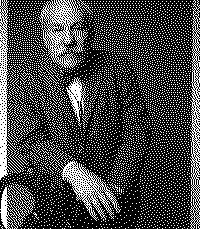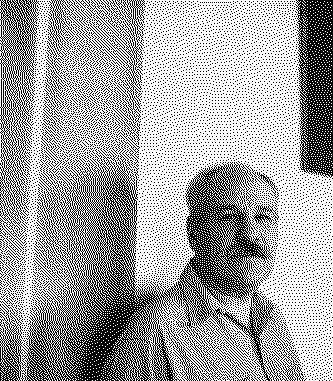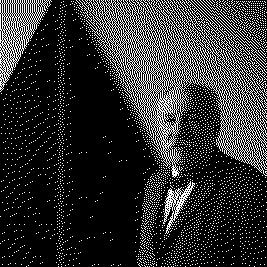Artists/Morris Louis
Fast Facts
Color Field Painting
Louis is best known for his work in Color Field painting, a style of abstract painting that emerged in New York City during the 1940s and 1950s. This style is characterized by large fields of flat, solid color spread across or stained into the canvas, creating areas of unbroken surface and a flat picture plane.
Staining Technique
He developed a unique technique where he stained unsized and unprimed canvas with thinned acrylic paint. This method allowed the paint to soak into the canvas, creating a veil-like effect with the colors seeming to emerge from within the canvas rather than sitting upon it.
Veil Paintings
One of his most famous series, the "Veils," created between 1954 and 1959, features layered, translucent paint, which creates a sense of depth and luminosity. These works are characterized by their ethereal quality and subtle interplay of colors.
Unfurled Series
Another significant series, the "Unfurleds," are large-scale paintings featuring rivulets of color running across the canvas, which he created by pouring lines of paint from the top of the canvas.
Artistic Evolution
Throughout his career, Louis experimented with and refined his techniques, moving from more gestural, expressive works to those that emphasized color and form in their purest sense.
Biography



Morris Louis, born Morris Louis Bernstein in Baltimore, Maryland, on November 28, 1912, was a pioneering American artist known for his significant contributions to Color Field painting and the Washington Color School movement in the 1950s.
He attended the Maryland Institute of Fine and Applied Arts, graduating in 1933, and initially painted in a Cubist style. However, he later shifted to post-painterly abstraction, significantly influenced by his encounters with other artists and critics of his time.
Louis moved to New York in 1936 and befriended Leonard Bocour, who introduced him to a special acrylic-resin Magna paint, which played a crucial role in his later works. In 1952, he relocated to Washington, D.C., where he worked as an instructor at the Washington Workshop Center. It was during this period that Louis, through his friendship with Kenneth Noland and guided by critic Clement Greenberg, visited Helen Frankenthaler's studio. The staining technique he observed there profoundly impacted his artistic direction, leading him to adopt a method where he thinned acrylic paint and poured it onto unprimed canvas. This technique allowed him to explore color as a primary means of expression, moving away from the gestural brushwork characteristic of Abstract Expressionism to achieve a more impersonal quality in his large canvases.
Louis's oeuvre is categorized into several major series, including the Veils (1954, 1958-1959), the Unfurleds (1960-1961), and the Stripes (1961-1962), along with transitional works that together define his exploration and presentation of color in abstract forms. Despite achieving only posthumous fame, Louis had been an active and prolific artist throughout his life, with his works being regularly exhibited before his untimely death from lung cancer on September 7, 1962, a condition attributed to prolonged exposure to paint vapors.
Throughout his career, Louis's works were showcased in several major exhibitions, including a memorial exhibition at the Solomon R. Guggenheim Museum in 1963, and retrospectives at prestigious institutions such as the Museum of Fine Arts, Boston, and the Museum of Modern Art (MoMA) in New York. His legacy is also celebrated through the Morris Louis Fellowship at George Washington University, established in his memory by his widow, Marcella Siegel, to support artists annually.
Morris Louis's contributions to abstract art and Color Field painting remain influential, his innovative techniques and distinct approach to color and form continuing to inspire and captivate audiences and artists alike (Morris Louis) (Wikipedia) (Encyclopedia Britannica) (The Museum of Modern Art) (National Gallery of Art).
Importance
Morris Louis' significance in the art world is both profound and far-reaching, establishing him as a pivotal figure in mid-20th-century American art, especially within the Color Field movement.
Pioneer of Color Field Painting
Louis is celebrated for his pioneering role in the Color Field movement, which emerged as part of the larger Abstract Expressionist wave. His technique of staining unprimed canvas with thinned paints allowed him to explore color as the primary subject of his paintings, distinguishing his work from more gestural forms of Abstract Expressionism and contributing significantly to the development of post-painterly abstraction (National Gallery of Art).
Innovator of the 'Veil' Technique
His creation of the 'Veil' series, wherein he layered translucent paint to create a complex interplay of colors and forms, marked a significant departure from the more tactile, brushy techniques of his predecessors. This approach not only emphasized the flatness of the canvas but also allowed colors to interact in subtle, sophisticated ways, influencing subsequent generations of artists and movements, including minimalism (National Gallery of Art).
Exemplar of Abstract Expressionism's Evolution
Louis' work illustrates the evolution of Abstract Expressionism into more structured, yet equally expressive forms. By focusing on color and form over the gestural brushwork that characterized the early Abstract Expressionists, Louis helped redefine the boundaries and possibilities of abstract painting in the 20th century (The Museum of Modern Art).
Collaborator in the Washington Color School
Alongside Kenneth Noland and others, Louis was integral to the formation of the Washington Color School, a group of artists who focused on form and color, free from figurative associations. This collaboration highlighted the shift from New York to other American cities as centers of artistic innovation during the post-war period (The Museum of Modern Art).
Legacy and Influence
Despite his premature death, Louis' work has had a lasting impact on both his contemporaries and later generations of artists. His exploration of color dynamics, scale, and compositional purity has continued to inspire artists exploring the boundaries between abstraction and representation, as well as those engaged in the dialogue between art and viewer (National Gallery of Art).
Critical Acclaim and Artistic Recognition
Louis' contributions to American art have been recognized through major retrospectives and exhibitions at leading institutions, such as the Museum of Modern Art (MoMA) and the Solomon R. Guggenheim Museum. These exhibitions, alongside sustained scholarly interest, attest to his enduring influence and significance within the art historical canon (Wikipedia) (The Museum of Modern Art).
Technique
Morris Louis' artistic technique revolutionized the way paint and canvas interact, marking a significant departure from traditional methods and contributing to the evolution of Color Field painting.
Staining Technique
Louis' most distinguished method involved staining raw, unprimed canvas with thinned-out acrylic paint, allowing the colors to soak into the fabric rather than sit atop it. This technique created a seamless, fluid appearance, with the canvas and paint merging into one. The effect was a depth of color and a sense of immediacy, with no apparent brushstrokes or texture, setting his work apart from the gestural methods of earlier Abstract Expressionists (National Gallery of Art).
Use of Magna Paint
He utilized Magna, a newly developed acrylic resin paint, which, unlike traditional oil paint, could be thinned with turpentine without losing its color saturation or intensity. This property was crucial for his staining technique, as it allowed him to layer translucent washes of color that could bleed and blend directly into the canvas, creating a vibrant, luminous effect that was both striking and subtle (National Gallery of Art) (The Museum of Modern Art).
Gravity as a Tool
Louis manipulated the flow of paint by tilting and moving the canvas, employing gravity as an active element in the distribution of color. This method gave him a degree of control over the paint's direction and speed, enabling him to create compositions that ranged from precise, linear forms to more organic, fluid shapes. His use of gravity as a tool underscores his innovative approach to material and process, emphasizing the role of chance and spontaneity in his work (National Gallery of Art).
Layering and Overlapping Colors
His works, particularly in series like the Veils and Unfurleds, showcase a sophisticated understanding of color theory, with Louis carefully layering and overlapping hues to achieve a complex, ethereal quality. Through this method, he was able to explore the interactions between colors, including their ability to recede or advance, mingle or stand apart, creating a dynamic visual experience that is both rich and nuanced (National Gallery of Art).
Elimination of Gestural Brushwork
Unlike many of his contemporaries in the Abstract Expressionist movement, Louis eschewed overt gestural brushwork, instead favoring a method where the hand of the artist was not directly visible. This approach aligns with his interest in purity and abstraction, where the focus is on color and form rather than on the physical action of painting. By removing the trace of the artist's hand, Louis sought to achieve a kind of universality, allowing the viewer to engage more directly with the work's visual and emotional content (National Gallery of Art).
Large-Scale Canvases
The scale of Louis' works is an integral aspect of his technique, with many of his paintings being of a monumental size. This choice not only enhances the immersive quality of his color fields but also reflects his ambition to envelop the viewer in the sensory experience of color and light. The expansive canvases amplify the visual impact of his staining technique, allowing for a more profound exploration of spatial and chromatic relationships (The Museum of Modern Art).











